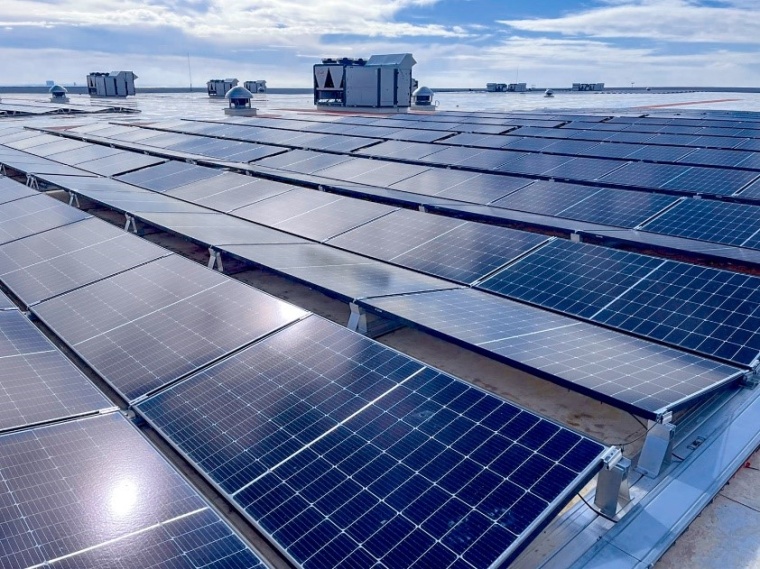Fire Protection for Solar Power Farm
A Fiber Optic Linear Heat Detection is a reliable tool for detecting fires on a photovoltaic installation. The rapid growth of solar energy worldwide has led to an increased need for reliable monitoring and fire detection in photovoltaic (PV) installations. PV systems, under high electrical loads, can generate substantial heat due to factors such as aging components, insufficient connection points, or environmental influences. Elevated temperatures can lead to electrical fires, resulting in severe damage to the PV facility and its surroundings, interruptions in power supply, and potential safety hazards.


Fiber Optic Linear Heat Detection (FO LHD) technology offers an innovative solution for fire and hotspot detection and monitoring in a wide variety of applications, including for the protection of data centers, traffic and utility tunnels, car parks, conveyor belts, metro stations, refineries, warehouse facilities, and solar farms.
How does Fiber Optic Linear Heat Detection work?
With a passive fiber optic cable used as a distributed temperature sensor, the system measures thousands of temperature points in real time, monitoring PV system temperatures and detecting and locating hotspots within 1 meter. The fiber optic cable can cover individual assets as needed or the entire solar farm, including panels, cables, junction boxes, and switches, providing a comprehensive temperature profile within seconds, even along difficult-to-access areas on rooftops or remote greenfield installations.
Advantages of Fiber Optic Linear Heat Detection LHD
- Provides extended coverage and continuous monitoring in largen areas
- No need for multiple sensors
- No manual inspection
- Not limited by cable length
- Provides high accuracy in temperature variations
- Localizes precisely the event of hotspots or fire
- Mapping of multiple fire zones
- Versatile and effective in harsh environments
- Immune to electromagnetic interference (EMI)
FO LHD offers several advantages over traditional fire detection methods and other non-fiber optic LHD systems. One advantage of FO LHD is that it provides extended coverage capabilities and continuous monitoring, eliminating the need for multiple sensors or manual inspection and offering a cost-effective solution for monitoring large areas. FO LHD systems are not limited by cable length, ensuring reliable monitoring across extended distances.
FO LHD provides high sensitivity and temperature resolution, enabling accurate and responsive monitoring of subtle temperature variations. Additionally, it offers precise event localization, allowing for the exact pinpointing of temperature changes, hotspots, or fire events. This information facilitates rapid responses and early intervention measures, leading to effective fire prevention. The system is adaptable – multiple fire zones can be mapped to the control instrument with various alarm parameters programmed for each zone. This customization minimizes false alarms while ensuring early detection.
FO LHD systems are also versatile and effective in harsh environments. They are immune to electromagnetic interference (EMI) and environmental influences, certified for explosive environments, and can withstand dirt, dust, corrosion, extreme temperature changes, and other challenging conditions. Furthermore, these systems integrate seamlessly with existing alarm systems, enabling immediate trigger activation or notifications to relevant personnel. Pre- and main alarms can be programmed to trigger automatic countermeasures, and information on fire location, size, and spread is available through dry contacts and high-level communication protocols like Modbus.
Finally, one major advantage of FO LHD systems is that they require minimal maintenance and are lightweight, flexible, and easy to install. Certified fiber optic cables boast a lifespan of up to 30 years, which ensures long-term reliable performance.
N45-Series Linear Heat DetectionHD
AP Sensing’s N45-Series LHD system includes the above features. In addition, it has a very long range and includes four channels for all distance ranges. The system has an intuitive, fully integrated web server, allowing for simple configuration via a browser and one-click validation of compliance settings.
Safety and system reliability are paramount in the N45-Series. It features a ruggedized housing design, the system adheres to state-of-the-art IT security standards and has received extensive type tests and certifications, such as EN54-22 (VdS), UL 521 (UL), CAN/ULC-S530, SIL-2, FM, and ATEX and IECEx for critical areas.
Solar Panel Monitoring in Spain
A recent, case study in Badajoz, Spain, highlights the effectiveness of AP Sensing’s FO LHD system in PV panel monitoring. One LHD device with four channels as well as AP Sensing’s certified safety sensor cable was installed for gapless coverage of all solar panels and cable routing along trays. The fiber optic cable was installed in a zigzag pattern between each row of solar panels in order to continuously measure the temperature of both the solar panels and the roof in case a fire was to develop below the roof or in a cable tray. With early detection and precise localization capabilities, the system improved the safety and performance of the PV system, reducing the risk of fires and potential damage.
Business Partner
AP Sensing GmbHHerrenberger Str. 130
71034 Boeblingen
Germany
most read

GIT SECURITY AWARD 2026 - The winners have been announced!
GIT SECURITY AWARD 2026: The best safety and security solutions of the year - now an overview of all winners


Security management, building security & perimeter protection: the winners of category E at the GIT SECURITY AWARD 2026
GIT SECURITY AWARD 2026: Security management, building security & perimeter protection - an overview of the most innovative solutions

What Does Ethical AI Governance Look Like in Practice?
The InCyber Briefing will explore AI, post-quantum readiness, data sovereignty, and crisis simulation

VIP-Lounge Interview: Marco Mille, Global Head of Security, Siemens AG
VIP in the World of Security: Marco Mille, Global Head of Security at Siemens AG










